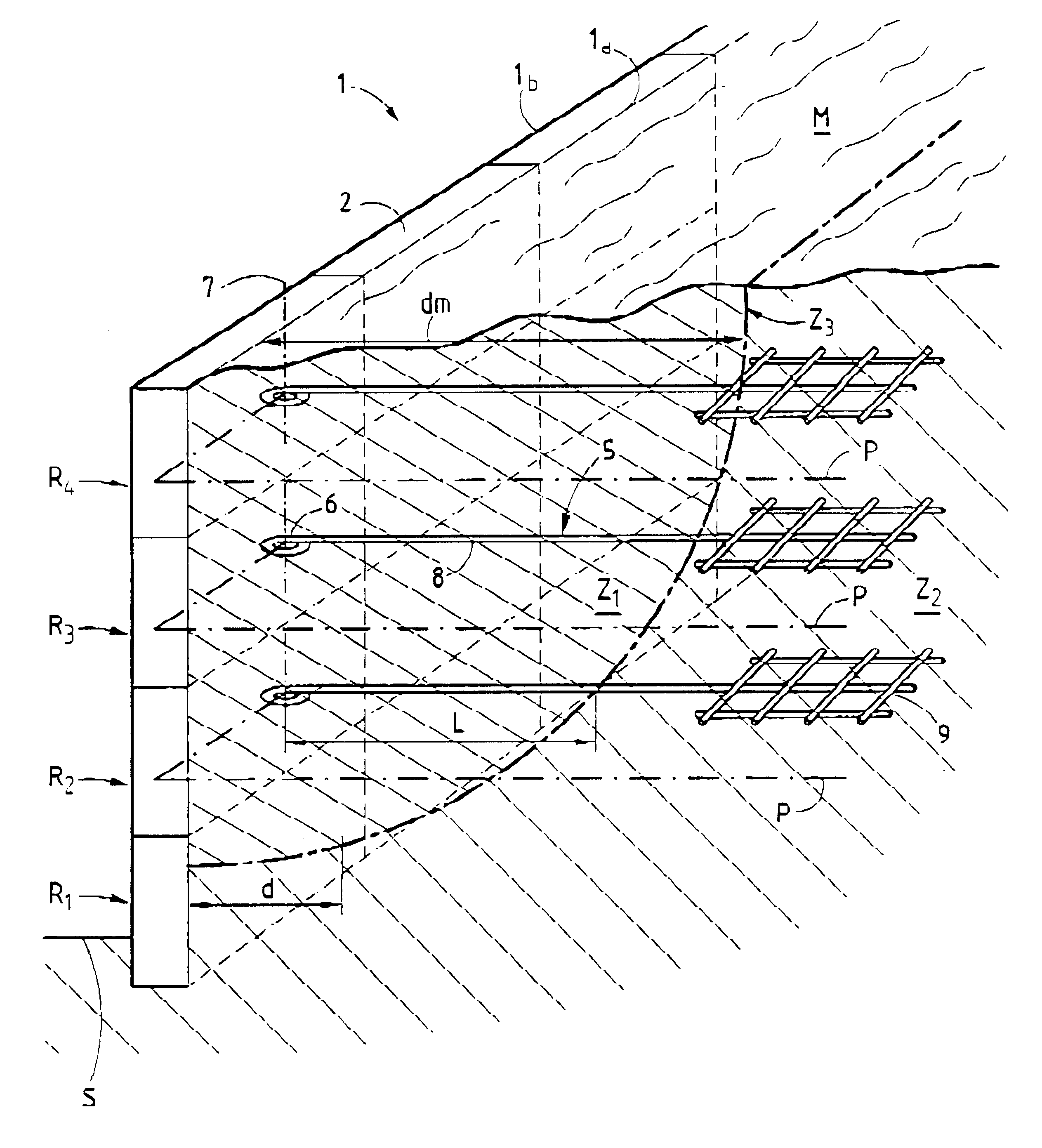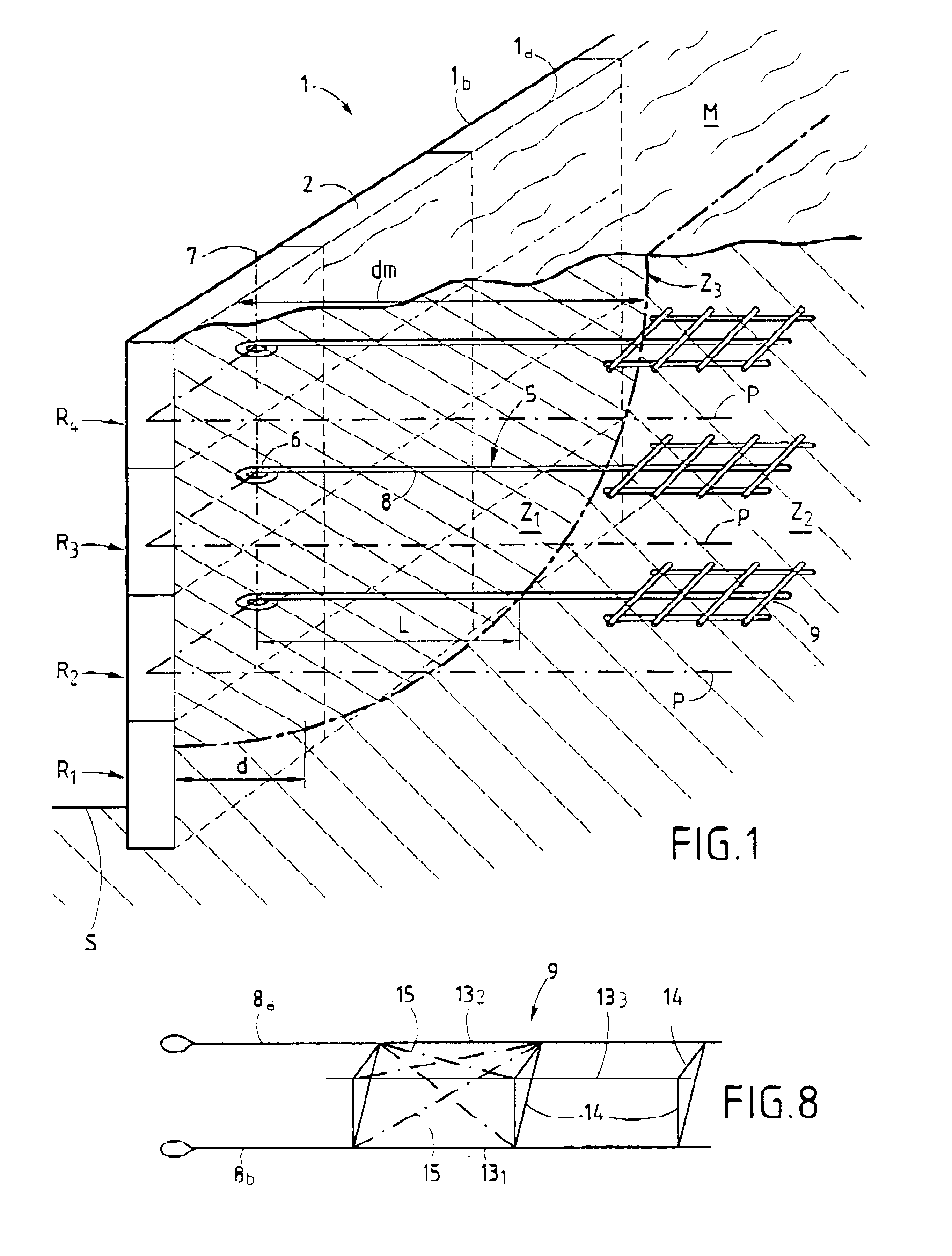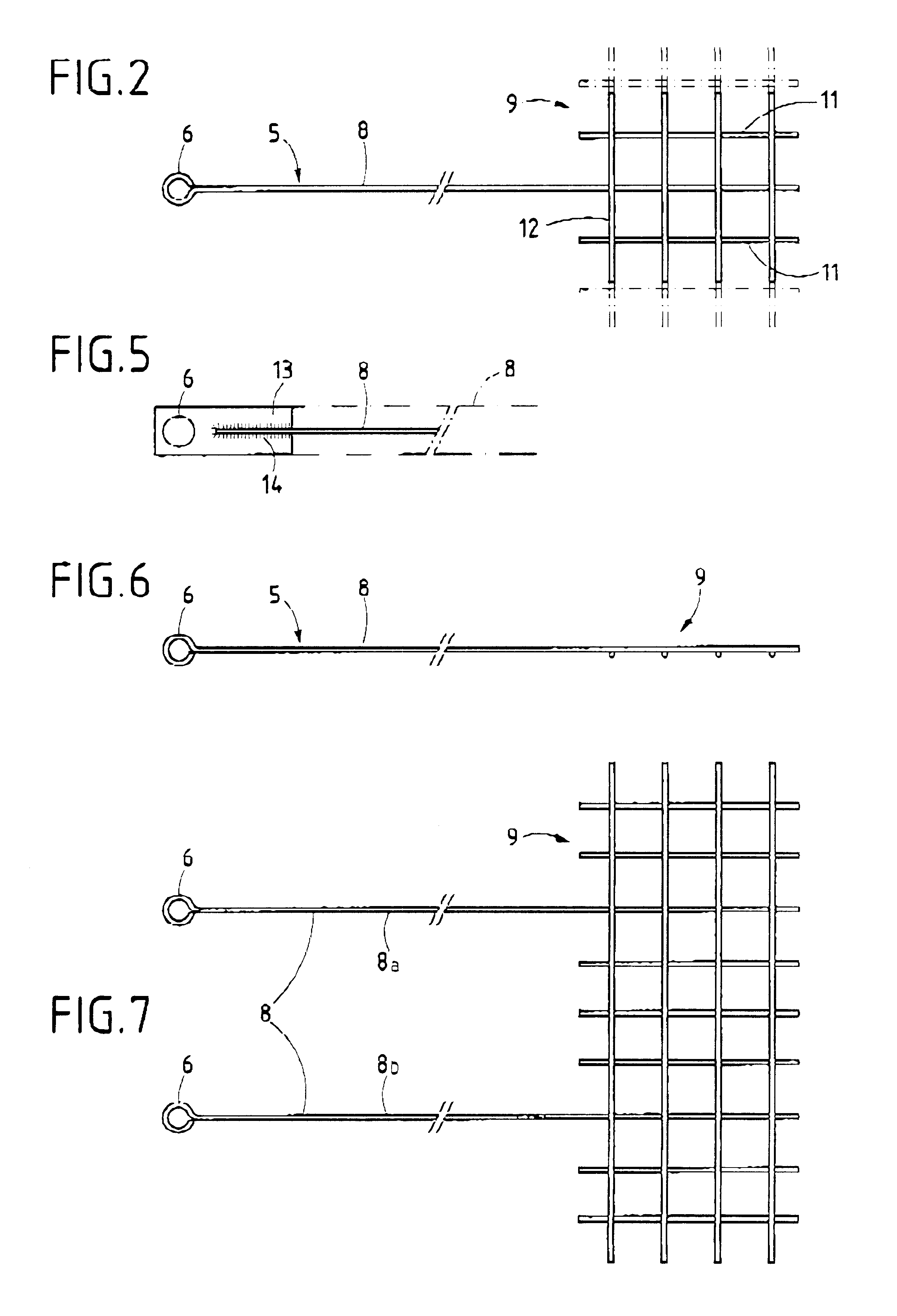Method for forming a head wall from an anchor pile and reinforcing member for said anchor pile structure
a technology of anchor pile and anchor pile, which is applied in the direction of bulkhead/pile, soil preservation, artificial islands, etc., can solve the problems of not being able to improve the appearance of the front face giving no opportunities for improving the appearance of the retaining wall, and stackable prefabricated modules not being able to control the forces that a
- Summary
- Abstract
- Description
- Claims
- Application Information
AI Technical Summary
Benefits of technology
Problems solved by technology
Method used
Image
Examples
Embodiment Construction
FIG. 1 is a diagrammatic view of a retaining work given overall reference 1 and implemented in the form of a wall that rises directly or indirectly from ground S, the wall being made up by associating facing elements or modules 2, e.g. prefabricated elements or modules, which are juxtaposed in horizontal rows R.sub.1, R.sub.2, R.sub.3, and R.sub.4, for example, being stacked in directly superposed manner as shown in the perspective view, or else being interleaved using a bond such as an offset from one row to the next. It could also be envisaged to superpose the modules so that they are stepped relative to one another, e.g. back towards the mass to be retained.
Such a work which has the appearance of a wall is intended to retain a mass M which is generally constituted by a filling of earth or analogous material delivered as the wall is built up and which is generally not very compacted.
The retaining method of the wall 1 is based on the principle that a mass such as M is found not to ...
PUM
 Login to View More
Login to View More Abstract
Description
Claims
Application Information
 Login to View More
Login to View More - R&D
- Intellectual Property
- Life Sciences
- Materials
- Tech Scout
- Unparalleled Data Quality
- Higher Quality Content
- 60% Fewer Hallucinations
Browse by: Latest US Patents, China's latest patents, Technical Efficacy Thesaurus, Application Domain, Technology Topic, Popular Technical Reports.
© 2025 PatSnap. All rights reserved.Legal|Privacy policy|Modern Slavery Act Transparency Statement|Sitemap|About US| Contact US: help@patsnap.com



